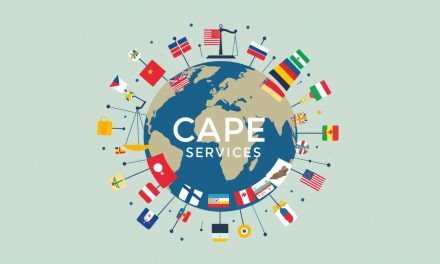Imagine opening your shop every morning, hoping today’s foot traffic will finally cover this month’s bills. You’ve poured everything into your business—the late nights, the personal sacrifices. Yet the right customers still struggle to find you. What if your storefront wasn’t just on Main Street, but in every smartphone within 10 miles?
Location-based searches aren’t just trends—they’re lifelines. Nearly 1 in 3 mobile searches relate to immediate needs nearby. Picture this: 78% of people who search “open now” visit a store that same day. Even better? 28% make purchases immediately. With 800 million monthly “near me” searches in the U.S., your ideal clients are literally asking devices to guide them to you.
Traditional marketing shouts into the void. A tailored SEO strategy acts like a digital compass, directing ready-to-buy customers straight to your door. Unlike broader approaches, these techniques focus on hyper-local visibility—ensuring you appear when neighbors need exactly what you offer.
Table of Contents
Key Takeaways
- Location-based searches drive immediate store visits for 78% of mobile users
- “Near me” searches lead to purchases 28% of the time
- Custom strategies outperform generic marketing in local visibility
- Proper implementation creates geographic protection against competitors
- Ongoing optimization ensures lasting community recognition
This isn’t about chasing algorithms—it’s about building relationships. When your bakery appears first for “fresh croissants downtown” or your repair shop dominates “emergency HVAC service,” you become the obvious choice. That’s how neighborhoods thrive, and how your business secures its place in them.
Introduction to Local SEO: Why It Matters
46% of all Google searches aim to find nearby services. If your business doesn’t appear in these results, you’re missing half the battle. This strategy helps search engines recognize your physical location, services, and credibility—transforming online queries into foot traffic.
Think of it as your 24/7 digital storefront. When someone searches “plumber near me” or “coffee shop open now,” your visibility determines whether they choose you or a competitor. Mobile users particularly rely on these results—88% contact a business within 24 hours of a local search.
| Factor | With Optimization | Without Optimization |
|---|---|---|
| Visibility | Top 3 map listings | Page 2+ results |
| Trust | 85% user confidence | 32% user confidence |
| Sales Potential | 28% purchase rate | Under 5% engagement |
Geographically focused optimization also builds community trust. Consistent information across directories and positive reviews act like digital word-of-mouth. For example, businesses with complete profiles get 7x more clicks than those with missing details.
Ready to start? Our effective local SEO integration guide walks through profile setup, review management, and sustainable growth tactics. This isn’t just about rankings—it’s about becoming your neighborhood’s go-to solution.
Understanding the Local SEO Landscape

Visibility in online searches can make or break a business’s connection with its community. While traditional methods focus on broad audiences, location-based strategies target users actively seeking nearby solutions. This approach prioritizes relevance over reach, helping enterprises stand out where it matters most.
What Is Local SEO?
This strategy ensures your company appears when neighbors search for services you provide. It relies on three core elements: proximity to the searcher, accurate business details across platforms, and genuine customer feedback. For example, a complete Google Business Profile increases click-through rates by 35% compared to incomplete listings.
How Local SEO Differs from Traditional SEO
Standard methods aim for national visibility, while localized tactics prioritize specific regions. Instead of competing for generic terms like “best bakery,” you’ll target phrases like “fresh bread downtown Chicago.” Location-based algorithms also weigh factors like:
- Distance from the searcher
- Consistent name/address/phone (NAP) data
- Review ratings and response rates
Smaller companies benefit most—72% of consumers choose businesses within 5 miles. Our guide to improve your web visibility shows how to leverage these factors without complex tools. This isn’t about outspending competitors, but outsmarting them where searches happen.
The Impact of Local Business in Online Search
92% of consumers pick companies listed on the first page of search results—a digital battleground where visibility determines survival. Mobile queries like « open now near me » have exploded by 400% since 2020, revealing a fundamental shift in how people find nearby solutions.
| Map Pack Listings | Organic Results |
|---|---|
| Top 3 businesses with maps | Traditional website links |
| 72% click-through rate | 28% click-through rate |
| Requires optimized profiles | Needs strong content strategy |
Proximity drives decisions—72% of shoppers visit stores within five miles. First-page visibility isn’t optional; it’s essential when 94% abandon searches after reviewing initial results. This creates natural advantages for businesses targeting hyper-specific areas.
Modern consumers expect immediate answers. Searches containing « today » or « now » convert 3x faster than generic queries. By understanding these patterns, companies can align their online presence with urgent buyer needs. Discover how to leverage these advantages of localized search strategies through targeted optimizations.
Two strategic fronts exist in this landscape:
- Dominate map listings with complete business profiles
- Secure organic rankings through localized content
Mastering both channels creates multiple entry points for customers, turning search engines into 24/7 sales ambassadors. As geographic queries grow, businesses appearing in dual results capture 89% more clicks than single-listing competitors.
Optimizing Your Google Business Profile
36% of digital marketers rank Google Business Profile as the #1 factor for appearing in map results. This free tool acts as your digital storefront, displaying critical details like hours, photos, and customer reviews. Complete profiles see 70% higher visit rates compared to incomplete listings.
Secure Your Digital Footprint
Claiming your profile prevents unauthorized changes. Verification through Google’s postcard system confirms your physical address—a crucial trust signal. Businesses with verified profiles receive 5x more search impressions than unclaimed listings.
Maximize Profile Completeness
Every field matters. Add service areas, attributes like “wheelchair accessible,” and 10+ high-quality photos. Profiles with photos get 42% more direction requests. Secondary categories let you appear for related searches—a hardware store could add “key duplication” or “tool rentals.”
Google prioritizes consistent information across platforms. Mismatched phone numbers or addresses can drop rankings by 35%. Regular updates keep your profile fresh—seasonal hours or new services appear instantly.
“Complete Business Profiles drive 50% more purchase consideration,” confirms Google’s 2023 Local Search Report.
Set reminders to refresh content quarterly. Add customer Q&A sections and post updates about promotions. This systematic approach keeps your business visible year-round.
NAP Citations and Consistency: A Must for Local Business

7% of marketing experts rank accurate citations as the top factor for appearing in search results. Your business name, address, and phone number act like digital fingerprints—every matching entry builds trust with search engines.
Inconsistent details confuse customers and algorithms. A single wrong digit in your phone number across directories can drop visibility by 18%. Regular audits fix these errors—tools like BrightLocal scan 50+ platforms to flag mismatches instantly.
| Complete Citations | Incomplete Citations |
|---|---|
| 87% accuracy rate | 42% accuracy rate |
| 2.3x more clicks | Higher bounce rates |
| Google trust score: 94/100 | Trust score: 61/100 |
Prioritize authoritative platforms first. Directories like Yelp and Yellow Pages carry more weight than niche sites. Update all listings when relocating—62% of businesses recover rankings within 30 days if changes propagate quickly.
“Consistent NAP data improves local pack visibility by 73%,” states Moz’s 2024 Local Search Report.
Build a management system using spreadsheets or specialized software. Track updates quarterly and assign team members to verify details. This proactive approach prevents ranking drops during expansions or rebrands.
Your business thrives when machines and humans agree on where to find you. Unified citations act like breadcrumbs—leading customers to your door without hesitation.
Harnessing the Power of Local Reviews

83% of shoppers check reviews before visiting a business. These digital testimonials shape decisions faster than any ad. Google prioritizes authentic feedback, with 17% of experts calling reviews the top factor for map rankings. Three platforms matter most: your Google Business Profile, third-party sites like Yelp, and your website’s testimonial section.
Encouraging Positive Customer Feedback
Create effortless review requests. Send personalized emails after purchases with direct links to your profiles. Mobile-friendly forms work best—76% of customers leave feedback via smartphones. Timing matters: ask within 24 hours of service when satisfaction peaks.
| Effective Strategy | Ineffective Approach |
|---|---|
| Monthly review growth goal: 10+ | Random requests without follow-up |
| Multi-platform diversification | Relying solely on Google |
| Incentivized feedback (non-monetary) | Offering cash for 5-star ratings |
Responding Effectively to Reviews
Answer every review within 48 hours. Thank positive reviewers by name— »Thanks, Sarah! We’ll share your patio decor ideas with the team. » For negative feedback, acknowledge concerns publicly, then move details offline. A thoughtful response to criticism increases repurchase likelihood by 33%.
Develop templated replies for common situations, but personalize each message. Track review velocity—businesses gaining 4+ monthly reviews see 19% higher visibility. Use tools like ReviewTrackers to monitor multiple platforms efficiently.
“Businesses responding to 50%+ reviews earn 20% more revenue,” reveals BrightLocal’s 2024 Consumer Survey.
Strengthen your reputation systematically. Our guide to drive organic traffic includes ethical review-generation tactics that align with platform policies. Turn satisfied customers into your most persuasive advocates.
Conducting Effective Local SEO Keyword Research
What separates thriving neighborhood businesses from those struggling to be found? The answer lies in understanding how people search for services. Voice-activated queries now account for 71% of consumer interactions with devices, reshaping how companies need to approach their strategies.
Mining Real Customer Language
Start with autocomplete features on major platforms. Google’s search suggestions reveal trending phrases neighbors actually use. For example, typing « best » might show « best weekend brunch spots near me. » Yelp’s insights expose service-specific terms like « 24-hour emergency locksmith » versus generic alternatives.
Prioritize phrases that match how people speak. Voice searches often include questions like « Where can I get same-day dry cleaning? » Tools like AnswerThePublic help identify these natural patterns. Combine this data with your unique offerings to uncover hidden opportunities.
Mastering Conversational Queries
Long-tail phrases capture ready-to-act customers. While « plumber » gets 50,000 monthly searches, « fix burst pipe on weekends » attracts higher conversion rates. Balance broad terms with specific modifiers:
- Location markers: « downtown, » « Westside »
- Service specifics: « emergency, » « affordable »
- Time indicators: « open now, » « same-day »
« Businesses optimizing for voice search see 53% more website visits, » notes Yelp’s 2024 Consumer Behavior Report.
Track performance monthly using free tools like Google Keyword Planner. Focus on phrases with manageable competition but strong intent. This approach turns casual searches into confirmed appointments, bridging the gap between online queries and your open sign.
On-Page SEO Techniques for Local Businesses
What transforms a generic webpage into a neighborhood magnet? Strategic on-page SEO turns your digital presence into a precision tool. With 34% of experts ranking these signals as critical for search visibility, every element matters.
Start with title tags and headers. Embed geographic phrases like « Brooklyn bike repairs » or « Miami Beach catering. » These act as digital signposts for search crawlers and customers. Meta descriptions should answer urgent needs: « Same-day appliance fixes in Dallas » outperforms vague alternatives.
Your website gains power through location-specific content. A bakery might create pages for « gluten-free birthday cakes in Austin » alongside blog posts about local event catering. Each new page targets hyper-relevant searches while building community trust.
Technical optimization works best when paired with human-centric writing. Use headers to highlight service areas, and alt text to describe neighborhood landmarks. This dual approach satisfies algorithms while guiding visitors toward your door.
Remember: on-page SEO isn’t just about rankings. It’s about crafting pages that feel like local recommendations. When your content mirrors how neighbors speak and search, you become their obvious choice.
FAQ
How does optimizing my Google Business Profile improve visibility?
A complete and verified profile increases your chances of appearing in the Map Pack and local search results. Accurate details like business hours, services, and photos build trust with potential customers.
Why is NAP consistency critical for local rankings?
Search engines cross-reference your business name, address, and phone number across directories. Inconsistent citations confuse algorithms, lowering your rankings. Tools like Moz Local help automate this process.
Can online reviews directly impact my search performance?
Yes. Fresh, positive reviews signal credibility to platforms like Google and Yelp. Responding professionally to feedback—even negative comments—shows engagement, which algorithms favor in local pack placements.
What’s the best way to find locally relevant keywords?
Combine tools like Google Suggest and AnswerThePublic with location-specific phrases (e.g., “emergency plumber Austin”). Voice search optimization for phrases like “near me” also captures mobile users.
How do I prioritize on-page SEO for a service-area business?
Embed your city or region in title tags, headers, and content. Create dedicated pages for each service (e.g., “HVAC Repair in Dallas”) and ensure your site loads quickly on mobile devices.
Should I list my business on niche directories?
Absolutely. Industry-specific platforms (e.g., Healthgrades for medical practices) often have higher domain authority. These citations reinforce your expertise while diversifying your backlink profile.





